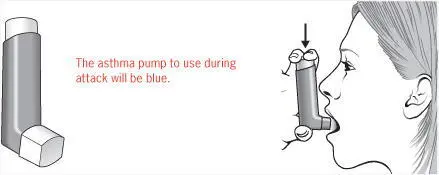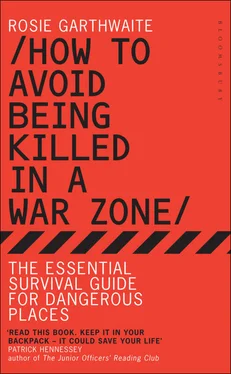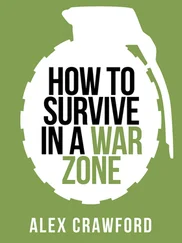
You take off the lid and the safety release, place the needle firmly against the thigh (it can go through clothing) and it should automatically inject the patient. You can give a dose of epinephrine every five minutes if it doesn’t work initially.
Carry on treating the symptoms of the allergic reaction. If you see the signs of shock, raise the person’s legs and calm their breathing.
If the allergic reaction is not something you have come across before, seek help amongst the locals. They are probably used to it.
Some weird insect took a liking to my neck in Kosovo. It bit me and it hurt. We were in a small village and my medical kit had almost too much in it. I sought local advice, and a woman applied the leaves of a plant to the affected area for immediate relief.
Nick Toksvig
Amputation
You will need a saw. Some survival kits come with a sort of bendy saw. If not, a large penknife saw will do if you are desperate. Desperation is when the choice is between losing limb or life – trapped under a concrete pillar in a burning building, that kind of thing.
Action:Make a tourniquet (see Tourniquets) with the aim of seeking out the main arteries after the amputation is done and tying them closed. The tourniquet is only temporary and should not be left on long.
Take a deep breath and steady your hand. Cut through the skin; it will retract. Cut through the muscle; it will retract. Cut through the bone. Immediately begin the search for the arteries (the big blood vessels that are gushing blood) and tie them closed with sterile thread (boil it if necessary, except if it is plastic, in which case you should soak it in a mild bleach or sterilizing solution).
Release the tourniquet and place a light bandage over the end of the stump. Begin treatment for shock (see Shock). Breathe again.
Asthma attack
The victim of an asthma attack will usually know what to do if they are a regular sufferer, but it is good to know how to support them.
First signs:You will hear the person struggling to get breath into their narrowed air passages, which go into spasm during an attack.

Action:If they are a regular asthma sufferer, immediately seek out their ‘reliever’ inhaler (in the UK and many other countries these are colour-coded blue, rather than brown which is a preventative; but this coding is not universal so ask the patient). Sit them in a position they find most comfortable. Do not lie them down. Take the lid off the inhaler and place the hollow mouthpiece in their mouth. Ask the patient to breathe in as slowly as they can and then try to hold their breath as you press down the top of the cartridge. It should be one fluid movement. If they have difficulty coordinating this, then push the end of the inhaler into a plastic or polystyrene coffee cup and use it as a mask.
A mild attack should ease within minutes. However, seek further treatment before it happens again or gets any worse.
If the attack is more serious, it will not ease. The person will become exhausted, managing only to whisper as they become more breathless. If necessary, you can give 1 puff of their inhaler every minute up to 20 puffs. If they fall unconscious, begin the ABC checks (see ABC – the first checks). Most importantly, you must open the airway. Call for urgent help as soon as possible and continue ABC until it arrives or the sufferer is stabilized.
Bites (see Avoiding creatures that bite)
Bleeding
Minor woundswill stop bleeding when pressure is applied, with or without a bandage. After a short time the blood will begin to clot naturally and stop the wound from bleeding. If the wound is in an arm or a leg, you can raise the limb at the same time as applying pressure in order to slow the blood pumping on the wound. Once the bleeding has stopped or eased, apply a dressing or stitches (see Treating wounds).
Large woundsare treated in a similar way, but you need to apply pressure for longer. First pack the wound with a large dressing, as clean as possible, then put pressure on top of that for 5–10 minutes. This should stop or significantly slow the bleeding. After that, wrap a bandage around the dressing to keep the pressure up. Once the bleeding has completely stopped, put on a new dressing if possible or apply stitches (see Treating wounds).
If you see blood frothing from the chest, this is serious as it can lead to a collapsed lung (see Collapsed lung).
Arterial woundsare evident when blood pumps out fast and at high pressure. There is too much gushing for the blood to clot, but it must be stopped. You can try putting pressure at the point where the blood is spurting from, or you can try cutting off the flow to that artery further up the limb or body (see Pressure points to control bleedingand Tourniquets).
Internal bleedingis difficult to diagnose and there is nothing you can do about it, but you should look out for the signs: pain; external bruises; hardness if it is in the abdomen; bloody discharge from the ear, mouth, nose, anus, vagina or urethra. If any of these signs are present, get the casualty to hospital as fast as possible. While waiting for expert help, you can prepare the patient for shock (see Shock).
Burns
The treatment of a burn depends upon its severity or depth.
First-degree burnsare superficial, like sunburn, affecting only the epidermis or outermost layer of skin and causing no blisters.

Second-degree burnsare slightly deeper, reaching below the outer layers of skin and blistering up. The blisters contain fluid released from the tissues below. These burns usually heal well, but can be dangerous if across more than 20 per cent of the body (10 per cent in a child). In that case, the massive loss of fluid from all those blisters can kill through shock (see Shock). You can judge the extent with the palm of your hand, which has an area of about 1 per cent.

Third-degree burnsare deep, affecting all the layers of skin, and may reach down as far as the nerves and muscles. In this case the casualty can’t feel pain because the nerve endings have been burnt. However, it is important to keep the burn protected and clean as even a small third-degree burn left untreated could become septic and therefore deadly.

Minor burns
In this category are first- and second-degree burns. These should be treated in the same way as severe burns (see below).
For information about sunburn, see Sunburn.
Severe burns
In this category are third-degree burns, electrical burns and chemical burns. With the last two, you need to make sure the casualty is moved away from the source of the burn before you begin treatment. And be aware that chemicals can still burn even when watered down, so take care to avoid the water wash-off from your treatment.
Читать дальше









![Джонатан Димблби - Barbarossa - How Hitler Lost the War [calibre]](/books/385421/dzhonatan-dimblbi-barbarossa-how-hitler-lost-the-w-thumb.webp)







